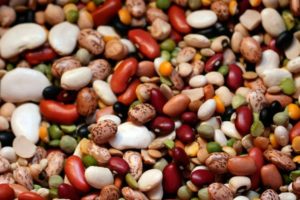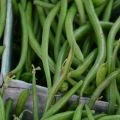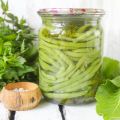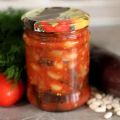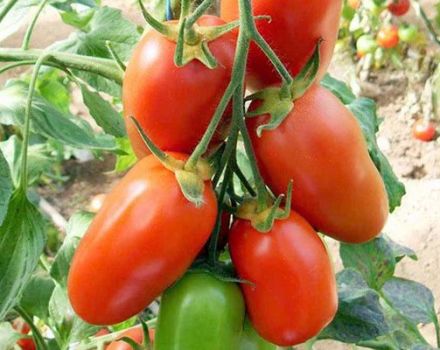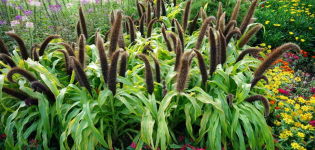Description of the best varieties and types of green beans with names
Beans are a popular vegetable crop and are valued all over the world as a source of vegetable protein. The cultivated types of beans differ in the shape and size of the bushes, the color of the beans, the length and color of the shoulder blades. The names and a brief description of the varieties will help to make the choice.
Description of beans
Beans can be considered a vegetable analogue of meat. It contains so much protein that it can replace chicken. Beans and pods are unique in composition, contain the entire range of nutrients that our body needs. Fruit and bean pods - a source of vitamins and minerals.
Beans belong to the category of dietary products, despite their high calorie content - 100 g contains 330 kcal. Beans appear in fasting diets. Useful properties of pods and beans:

- lower sugar levels in diabetics, this is facilitated by arginine contained in beans, which is involved in metabolic processes;
- have a positive effect on immunity due to the content of vitamins - natural antioxidants;
- improve bowel function thanks to methionine, tyrosine and lysine, which affect the rate of protein absorption;
- there is a slight diuretic effect and a positive effect on the entire human urogenital system.
Bean kernels containing protein are popular among vegetarians and are included in various dishes. Raw grains are not eaten, they contain toxins that can harm the body. During heat treatment, they are destroyed and do not cause poisoning.
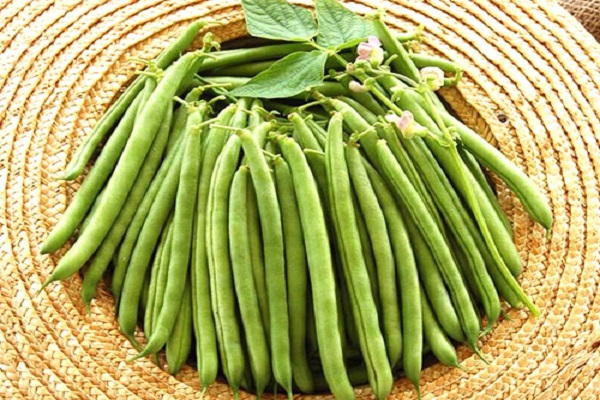
The legume crop is cultivated in many countries, it has many varieties that differ in characteristics:
- the shape of the bean pods;
- the color of the blades and grains;
- type of bush;
- taste;
- growing method;
- way of consumption (grains or pods).
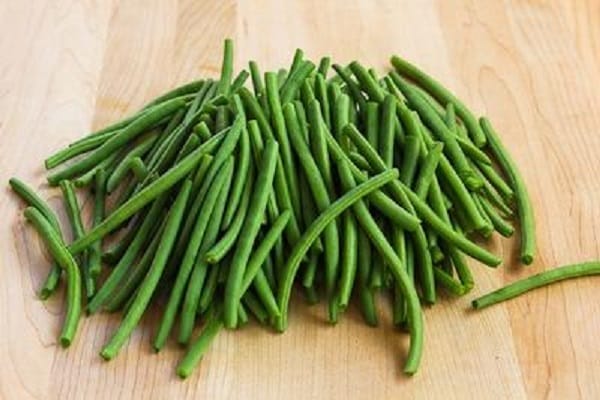
Types of beans
Before purchasing seeds for planting, you need to figure out what types of beans are and what is the difference between them. All varieties are divided into 3 groups according to the method of use:
- shelling - they use beans for food;
- asparagus (sugar) - use the shoulder blades together with the grains, the shoulder blades do not contain hard fibers, the seeds are not large;
- universal (semi-sugar) - unripe pods are eaten, and after ripening - grains.
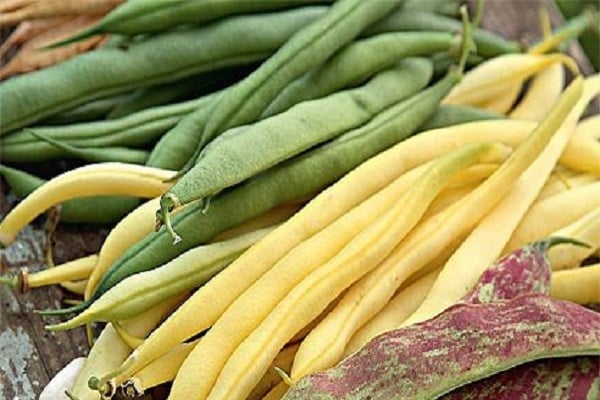
There are varieties of beans according to the shape of the bush: semi-curly, curly, bush. Bush-type beans are used for cultivation on an industrial scale and in personal plots.At agricultural enterprises, the crop is harvested manually or mechanically. The height of the bushes does not exceed 60 cm. The varieties of this species are unpretentious, fruitful, cold-resistant.
Varieties of the curling type culture form long, up to 5 m whips, require support. Care for such varieties is more difficult, they mature later. Curly beans are very decorative, they are used in landscape design for background decoration, decoration of fences, walls of houses and sheds. The semi-weaving type includes those varieties in which the length of the whips does not exceed 2 meters.
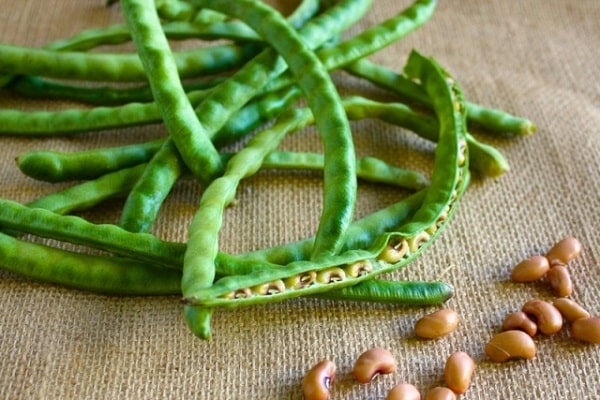
Asparagus beans: varieties
Green beans are tender, juicy pods without a parchment layer and medium-sized grains. Breeding work on this crop is carried out in many countries of the world (USA, France, Holland, Russia, Italy).
The most popular among domestic vegetable growers is Vigna, a long-stemmed species common in India and Asia. The varieties of this variety are mid-ripening, it takes 80 days for the pods to ripen. In temperate climates, it is grown as a greenhouse crop.
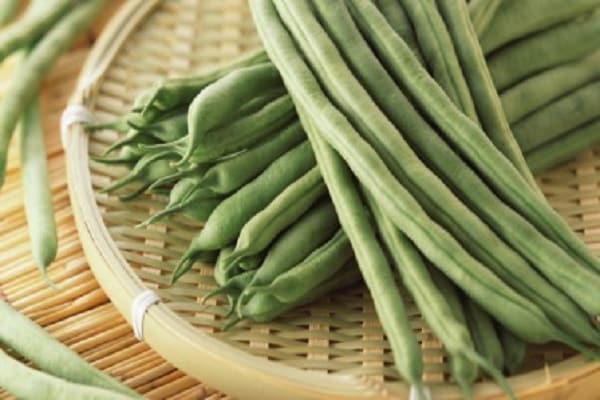
Curly beans: varieties
There are good varieties of domestic beans that are not inferior in characteristics to imported ones, so it is difficult to decide which ones are better to buy. The Red Riding Hood variety deserves the attention of summer residents. It is loved for its beautiful, strong, well-curling shoots, which reach 3-3.5 m in length.
The decorative properties are clearly manifested during flowering, which lasts from June to September. The bush throws out long stalks topped with beautiful flower clusters. The little red riding hood is used to decorate garden structures, the fruits are harvested and used to prepare vegetable side dishes, salads, and stews.

In the Russian regions, curly sugar varieties give stable yields:
- Winner;
- Golden nectar;
- Melody.
The melody is the earliest ripening, the pods begin to be consumed in 1.5-2 months, followed by the earliest ripening Golden nectar, it ripens on the 70th day. The winner is the late maturing, it takes at least 3 months to form the shoulder blades.

Bush beans: varieties
There is a compact bush variety of asparagus beans, which, due to early maturation (55-65 days), can be grown in any region of the Russian Federation. The low-growing Bona variety (bush height 40 cm) was bred by domestic breeders, it can be found at dachas in Siberia and the Moscow region. Shoulders and white beans are eaten.
Pod characteristics:
- length 15 cm;
- rounded shape with a curved tip;
- there are no hard fibers in the pulp of the valves;
- number of beans 5, color white.
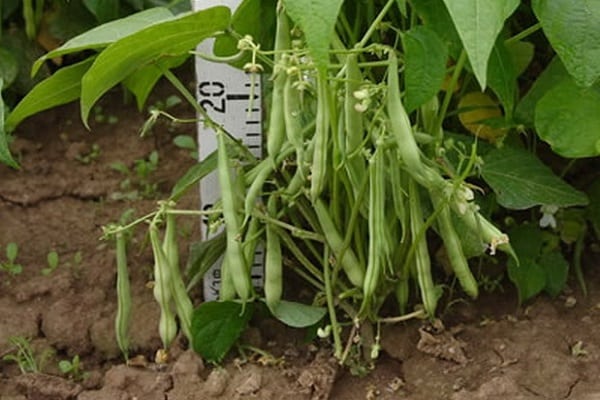
In the southeast of Russia, the common bean tepari is popular. This is a special kind of bush bean native to the southern states of the United States. It is appreciated for its heat resistance, drought resistance and good immunity. Species characteristics:
- bushes up to 0.5 m high or climbing varieties with 3-meter lashes;
- flowers are white, pink, light purple;
- pod length 10 cm;
- the color of the seeds depends on the variety and can be variegated, burgundy, white, brown.
The flavor of the beans depends on the color. This popular variety of legumes is used for medicinal purposes, in cooking and in animal husbandry as feed.
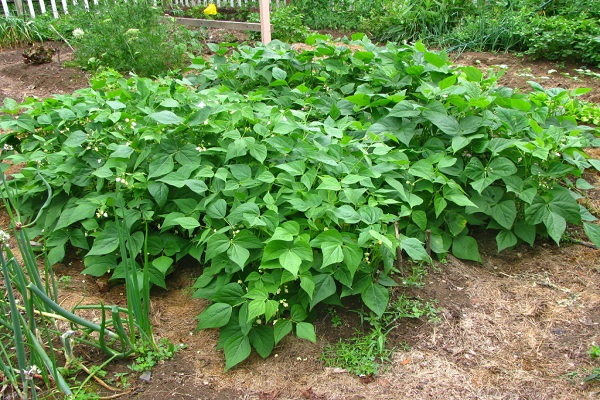
Hulled beans
Bush type beans are considered universal in terms of the growing region. It does not require special care, it grows in any climate. Grains are of nutritional value, they are not eaten. Grains are stored for a long time in dry form and do not require freezing; they are heat treated before use (boiled, stewed).
Curly varieties deserve attention. Scourges of the Royal Grain in a short time grow up to 3.5 m, during flowering they serve as a decoration of the garden (vegetable garden). Formation and maturation of pods (12-14 cm) lasts about 70 days. The grains are large, white, 3-4 pcs. in a pod.

Grain bean variety Beauty is chosen for the original color of the grains (it is two-color), cold resistance, compact, fruitful bushes, disease-resistant. The yield is friendly, the beans have a good taste, and are universal in application.
Mid-season beans Ruby were called so for a reason, its large grains are painted in a dark cherry, almost ruby color. Bush plant (height 60 cm). The pods are even, straight, up to 15 cm long. Advantages of Rubin: no lodging, resistance to bacteriosis, good taste.
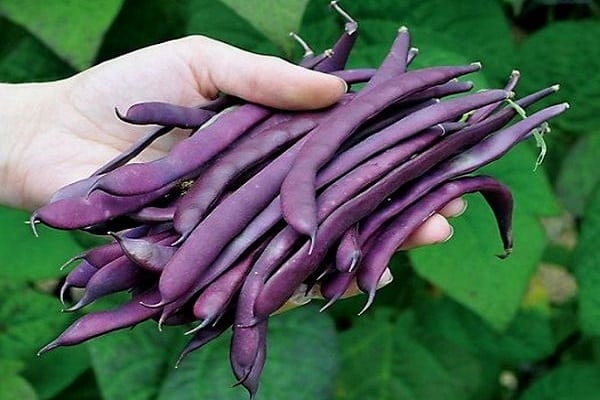
Beans Shokoladnitsa forms tall bushes, belongs to medium late varieties, beans are variegated. The background of the grains is light brown, the spots (specks) are white. Fruiting is extended.
Description of the characteristics of the variety Gribovskaya 92:
- medium early (90-110 days);
- bush height from 20 to 45 cm;
- pod length 15 cm, valves contain rigid fibers.
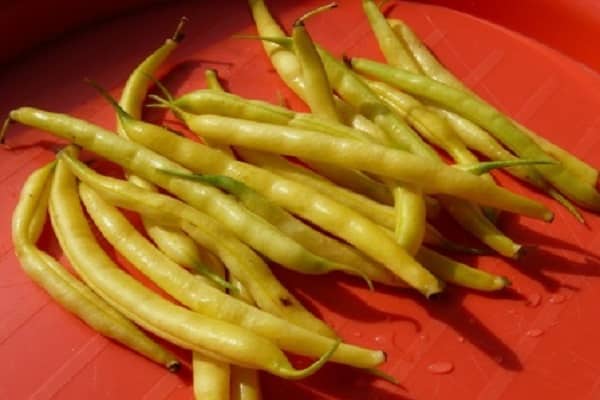
Fruit color
In most summer cottages, shelling and asparagus beans are grown with beans of four basic colors:
- white;
- yellow;
- red;
- purple.
In the United States, the popular white type of legume is Navi, with small grains that do not require prolonged heat treatment.
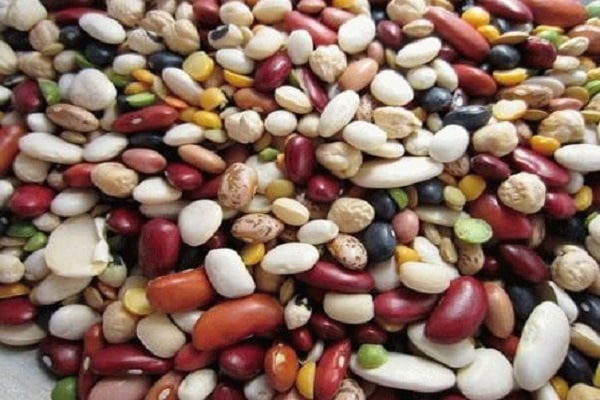
White
In Turkey and a number of Asian countries, just like in the United States, they love white beans; they grow Chali, a type of bush beans. Coarse beans are boiled for 40 minutes without presoaking. Heat treatment does not reduce the beneficial properties of the fruit; they are most often served stewed.
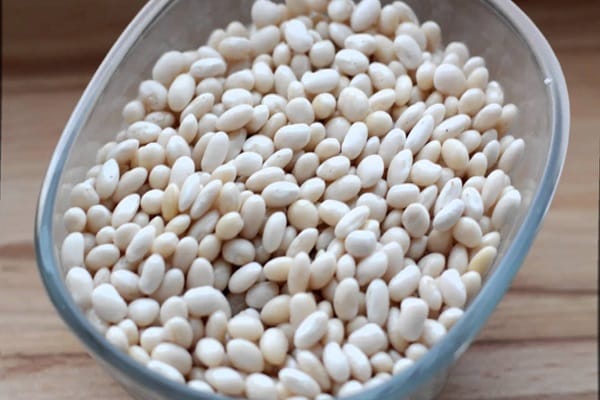
Red
In Mexican cuisine, the red bean varieties are preferred. For the preparation of hot and cold dishes, Kidney beans are grown for canning. The grains of these varieties can have variegated, purple, dark red color. Beans are very healthy because of their high iron content; for its better absorption, grains are cooked along with other vegetables. This variety is recommended for use by patients with diagnoses: diabetes mellitus, rheumatism.
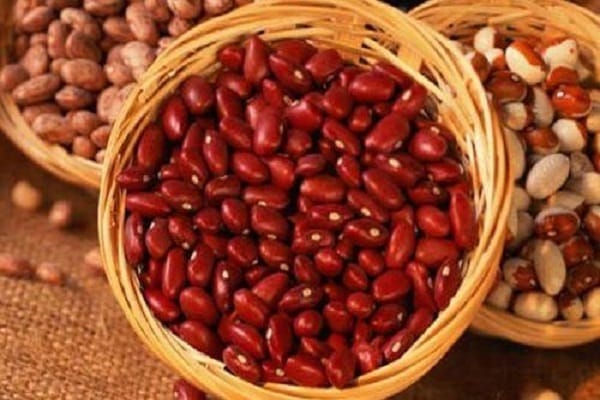
Black
The black-fruited variety Sorceress looks original. The beans are shiny, black and ripen quickly. The color of the rounded valves is pale yellow (waxy). The pods are long, from 14 to 16 cm, and have a delicious taste. Young shoulder blades and fully ripe beans are eaten. The sorceress rarely suffers from pests and diseases during the season.

Yellow
Yellow green beans are consumed without heat treatment, as well as stewed and boiled. The best is the yellow bean Sweet Courage. It is famous for its high yields of bright yellow beans (length 16 cm), ripens early (from 40 to 55 days). Bush type of plant, height of bushes 40 cm.

Brown
The brown kidney-shaped fruits of the Violetta curly bean. A beautiful plant with lashes up to 2.5 m long, covered with dark green wrinkled foliage. Ripens in medium terms. Feature of pods:
- curved;
- without parchment layer and fibers;
- the color of the shutters is purple.
Violetta's yield is 2.5 kg / m².
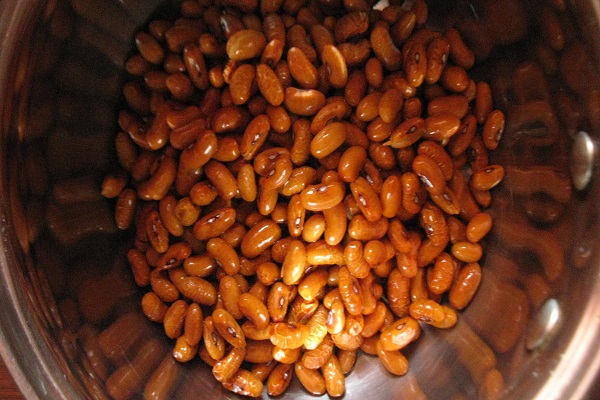
Variegated
Pinto beans are loved and grown in the USA and Latin America; their beans are delicious, variegated. On the pale pink background of the grains, brown-red strokes of various sizes and shapes are visible. Weed began its history in Spain.
For lovers of original vegetables, Yin Yang asparagus beans are ideal, this new selection cannot but please:
- early maturation;
- pods are round, bright yellow;
- flowers are beautiful, lemon shade;
- the beans have an original spotted, white and black color;
- the leaves are tender, without a parchment layer;
- the bushes are low.
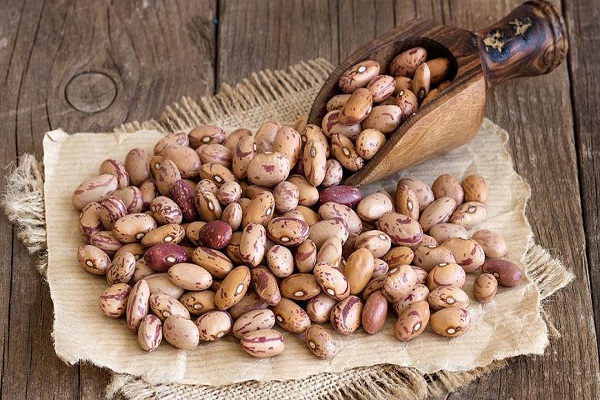
Fruit size
The range of grain sizes and shapes is wide. There is a classification of varieties based on the size of the grains (pods):
- small;
- middle;
- large.
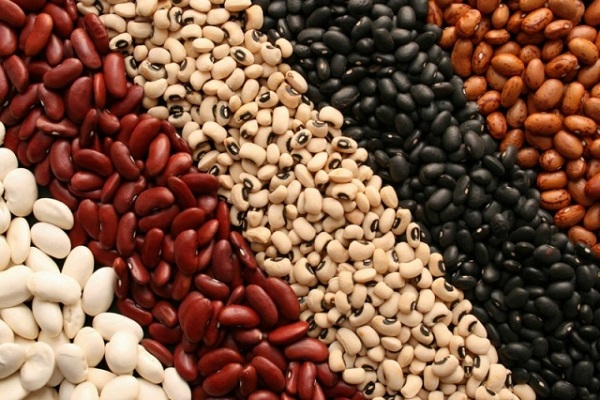
Large beans
Blauhild's climbing variety can be called giant. This plant has everything purple (pods, flowers). The growing season is long - 110 days. In the middle lane, Blauhilda is propagated by seedlings.The plant is decorative, blooms and bears fruit at the same time. Large, wide, purple pods 23 cm long turn green when cooked. Large beige grains. Other varieties of large asparagus beans:
- Green giant;
- Harmony;
- Spaghetti;
- Matilda.
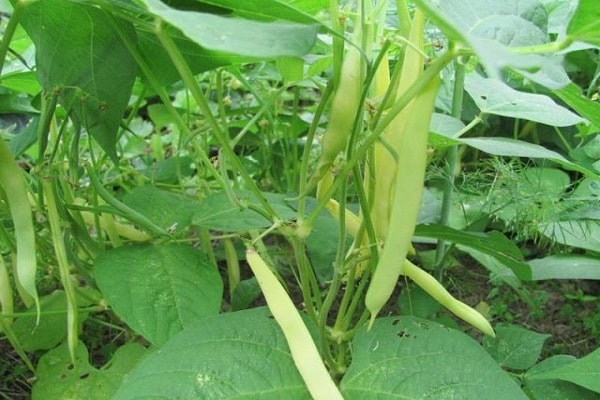
Small
Navy is a type of small white kidney bean. The grains are very similar in shape to peas (round, small). They are very beneficial due to their high fiber and vitamin content. The taste of the beans is delicate, the consistency is dense. The nutritional value:
- protein 25.1 g;
- fats 1.5 g;
- carbohydrates 69.1 g.

Bean varieties by maturity
The ripening period is one of the important characteristics of the variety. There is one classification for all species, the assessment parameters are given in the table.
| Ripening characteristic | Ripening rate in days |
| Early | Up to 65 |
| Medium early | 65 to 75 |
| Mid-season | 75 to 100 |
| Late | From 100 |
Early and mid-early varieties are popular with summer residents, quickly ripening in a temperate climate. For landing in the country choose:
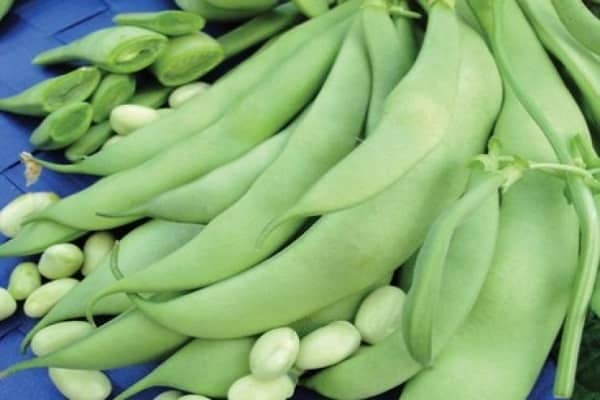
- Saksa 615 - an old, well-deserved bush-type variety, in operation since 1943, forms bushes up to 54 cm high, shoulder blades grow up to 13 cm in length, beans are yellow, ripening early (50 days);
- Caramel is a bushy variety that forms long beans, devoid of tough fibers, with beans of excellent taste, is distinguished by an increased immunity to legume diseases;
- Shahinya is a vegetable variety, bush (30 cm high), forms light green blades up to 11 cm long and 0.9 cm in diameter, there is no parchment layer, the taste is excellent, and disease resistance is high.
Large selection of mid-season varieties. The Winner variety deserves special attention. This is a beautiful climbing plant. The winner is appreciated by summer residents for the high decorativeness of the bushes, with its help they create spectacular hedges in the garden, decorate gazebos and terraces. The pods are formed long (30 cm) flat in shape, the taste of the beans is good.

It is worth paying attention to the universal late-ripening variety (ripens 100 days) Moscow White. Immature shoulder blades (up to 11 cm long) and ripe white beans are eaten. Moscow White forms 40-centimeter compact bushes, the yield of which can reach up to 1.5 kg / m².
Recommendations by region
The technology of growing legumes does not depend on the climatic zone. There are differences in the timing of planting (harvesting) and soil composition. For each region, you can choose a variety suitable for the ripening period. Late-maturing species grow well in Siberia indoors.

For Siberia
The cultivation of this legume crop is common in Siberia. There is a large selection of varieties that mature in the open field during the short Siberian summer:
- The gold of Siberia is a vegetable species, medium-sized bushes, yellow pods, white grains, yield 1.4 kg / m²;
- Nika is a fruitful vegetable variety with an early ripening period (50 days), a 44 cm high bush, pale green valves, do not contain coarse fibers, ocher-colored grains are kidney-shaped;
- Siberian;
- Anniversary.
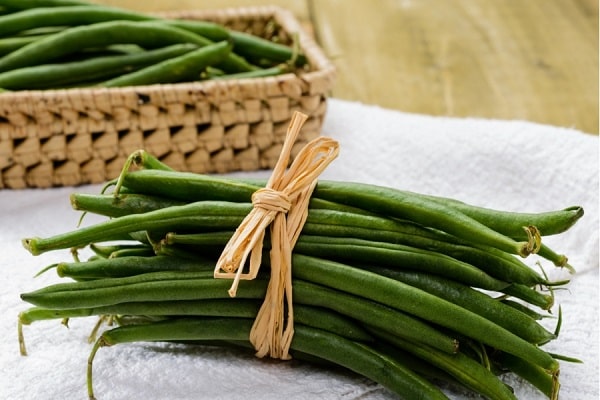
For the middle lane
In the middle lane, the Swallow beans are especially popular. This grain species is unpretentious, adapting well to weather conditions. Variety characteristics:
- the bush is low, compact;
- early ripening;
- pod length 15 cm;
- the grain is white with black swallow-shaped strokes.
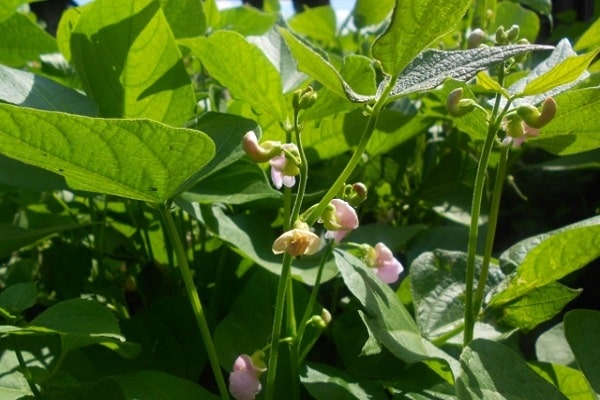
For southern regions
The table shows the varieties for the southern regions.
| Grain | Vegetable |
| Barbara | News |
| Hostess dream | Zinaida |
| Stanichnaya | Luck |
| Heliada | Hope |
| Ballad | Dialogue |
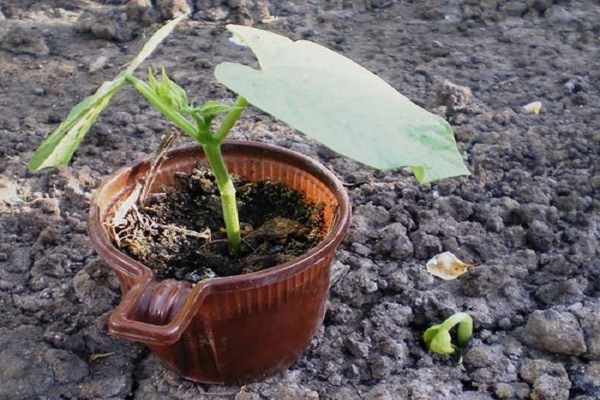
Varieties by cultivation method
For open ground, zoned varieties (asparagus, grain) are chosen that are resistant to infections and climatic conditions of the region. Popular among asparagus:
- Flamingo;
- Crane;
- Gerda;
- Polka.
From grain varieties, preference is given to Swallow, Rubin, Shokoladnitsa.
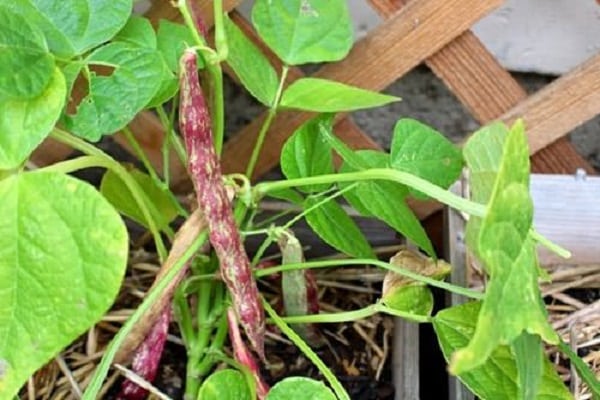
For a greenhouse, they recommend:
- Cobra;
- Ferrari;
- Golden Teepee;
- Blue Lake.
For the balcony, they buy the seeds of the undersized bush asparagus beans Mascote, this variety is especially popular in France. Small bushes will be comfortable in a pot placed on the balcony. Small bushes bear fruit well. Long (15 cm) green pods, juicy and tasty, ripen in 50 days.
Successful work of domestic and foreign breeders allows us to grow new interesting varieties every year.

